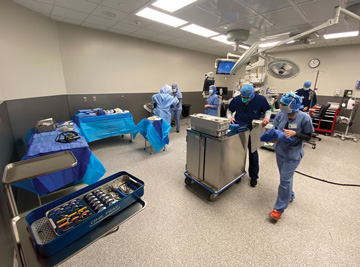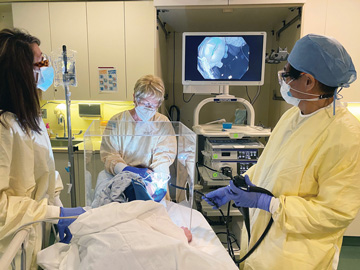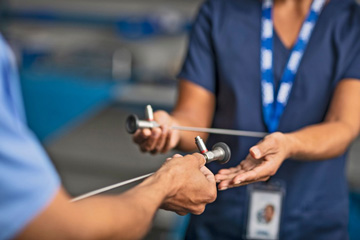Regulated by the FDA, device manufacturers and their authorized servicers are on the leading edge of making their products safer.
 St. Cloud Surgery Center
St. Cloud Surgery Center
HOW SAFE? Medical device manufacturers and their authorized servicers must follow rigorous FDA regulations, while unregulated third-party servicers do not.
The Advanced Medical Technology Association (AdvaMed) says original equipment manufacturers (OEMs) meet the highest standards for servicing medical devices, which is vital for this often complex equipment to function safely and effectively. The same, AdvaMed claims, can't be said about what it calls unregulated third-party service providers.
AdvaMed, a medical device trade association, notes that OEMs and their authorized servicers must comply with rigorous FDA regulations that third-party servicers are not legally bound to follow. "OEMs… must follow comprehensive FDA quality system requirements to ensure their devices are properly serviced and maintained and continue to meet safety and effectiveness standards set by the agency," says AdvaMed. "However, tens of thousands of unregulated third-party servicers do not follow the same FDA requirements, putting patients and device users at risk."
Here are five areas in which OEMs and their authorized servicers must comply that aren't legally required of third-party servicers.
Quality system regulation (QSR). This ensures that all servicing operations are carefully controlled and executed. QSRs are documented and approved policies and procedures that cover all aspects of a company's operations, including purchasing of replacement parts and components; staff training; equipment and facility maintenance; supplier evaluations; recordkeeping and document retention; and corrective action taken.
Registration. OEMs must provide the FDA with the locations of their facilities so the agency can inspect them.
Device reporting. Deaths, serious injuries or malfunctions involving a medical device must be reported to the FDA so the agency and the manufacturers know about serious and potentially serious safety problems.
Voluntary recalls. Recalls can lead to quick and efficient resolution of problems with devices. A recall can result in anything from a relatively simple labeling change to a full removal of a product from the market. There are comprehensive procedures attached to recalls designed to protect patients from injury, deception or defective products.
Corrections and removals. Companies must report anything found in the field to address health risks posed by their devices.
While there are many third-party servicers who operate conscientiously and responsibly, FDA-monitored OEMs and their authorized dealers remain the ultimate, final-word authority on their own products and the latest changes and corrections to them.
.svg?sfvrsn=be606e78_3)



.svg?sfvrsn=56b2f850_5)